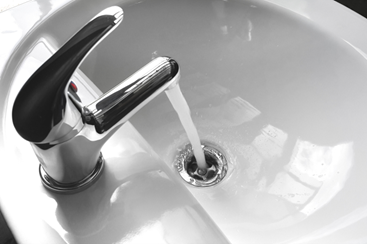How to Treat Dry Drain
How to Treat Dry Drain
You don’t want customers to notice foul odors when they walk through the door. But this is all too common when your facility deals with dry drain. You want solutions to these problems so your facility can be as clean and welcoming as possible, but where do you start? Will it even work?
State Chemical has been providing chemical solutions to businesses like you since 1911, and one of these solutions is Shut Your Trap, which treats dry drain. We understand that you have bigger goals than simply dealing with nitty-gritty issues, so it’s our goal to answer your questions efficiently so that your job is as painless as possible.
To stay in line with this goal, we will cover what causes dry drain, what kinds of impact it can have, and how to treat it.
What Causes Dry Drain?
Dry drain happens when a drain is infrequently used for a significant period of time. For example, think about a middle school during summer break. Without anyone using the sinks in the bathrooms or the cafeteria, the drains dry out and smell foul—symptoms of dry drain.
Why does this happen? The answer lies in the P-trap, the squiggly pipe underneath your sink.
A P-trap is designed to always hold water in the dip of the pipe. Even after the sink drains, water should fill this curve. The water acts as a barrier between the side of the drain that you see and the pipes leading to the sewer. This means the water blocks sewer gases from traveling up your drain and releasing foul odors.
However, when your drain is infrequently used, the water in your P-trap evaporates. At a certain point, the water becomes depleted enough that sewer gases can slip through the pipes into your facility. This is when you start experiencing foul odors, the common symptom of dry drain.
Even if you use your drain frequently, dry drain can also happen in the winter due to your building’s heating system running constantly, which increases water evaporation in your P-trap.
What is the Impact of Dry Drain?
When dealing with dry drain, the most obvious consequence is that your facility will smell very bad, like rotten eggs. You’ll be dealing with employee discomfort as well as turning customers off to your facility. Foul scents are a sign of uncleanliness, and many customers would rather not take that risk.
Similarly, you could face problems with health inspections and audits. Sewer gases are made up of hydrogen sulfide gas, which is generally not permitted in any facility.
Additionally, hydrogen sulfide gas can have negative health implications. Lower-level exposure could lead to eye irritation, shortness of breath, sore throat, and a cough. Meanwhile, higher-level exposure may look like fatigue, loss of appetite, irritability, headaches, dizziness, and poor memory. Very high-level exposure could even lead to death.
From dry drain, this extreme exposure is very unlikely but is still important to be wary of. If you don’t resolve this issue in a timely manner, you’re putting your staff and customers at risk.
How to Treat Dry Drain
Dry drain is not an ideal condition for your pipes to be in. But how do you resolve it? Based on your preferences, you have a few options:
Consistently Refill Your Drains
During times of less usage and in the winter months, the easiest way to ensure your drains aren’t dry is to simply run water. Roughly every week or two, you can let water run for a minute or two down all of your drains or pour a half gallon of water down each of your drains. This will ensure that the P-trap is sufficiently filled.
However, you must make a point of doing this, or else you will experience the negative effects of dry drain.
Invest in a Product to Treat Dry Drain
Your other option for this issue is to use a product that slows the evaporation of water in the P-trap. This way, if you forget to pour water down your drains consistently, the water will take longer to evaporate than usual to prevent dry drain.
Usually, this will be a substance that floats on top of the water, sealing it off to prevent evaporation. When you use your drains, the water will be heavy enough to break through the product and flow through the drain. However, the product will otherwise remain atop the water, slowing evaporation.
Choose a Dry Drain Trap Solution that Suits Your Facility
No one wants to frequent a smelly business, and you don’t want your facility to be seen in a negative light. Now that you know what causes dry drain and how to prevent it, your next step is to explore effective solutions to keep your drains from drying out.










